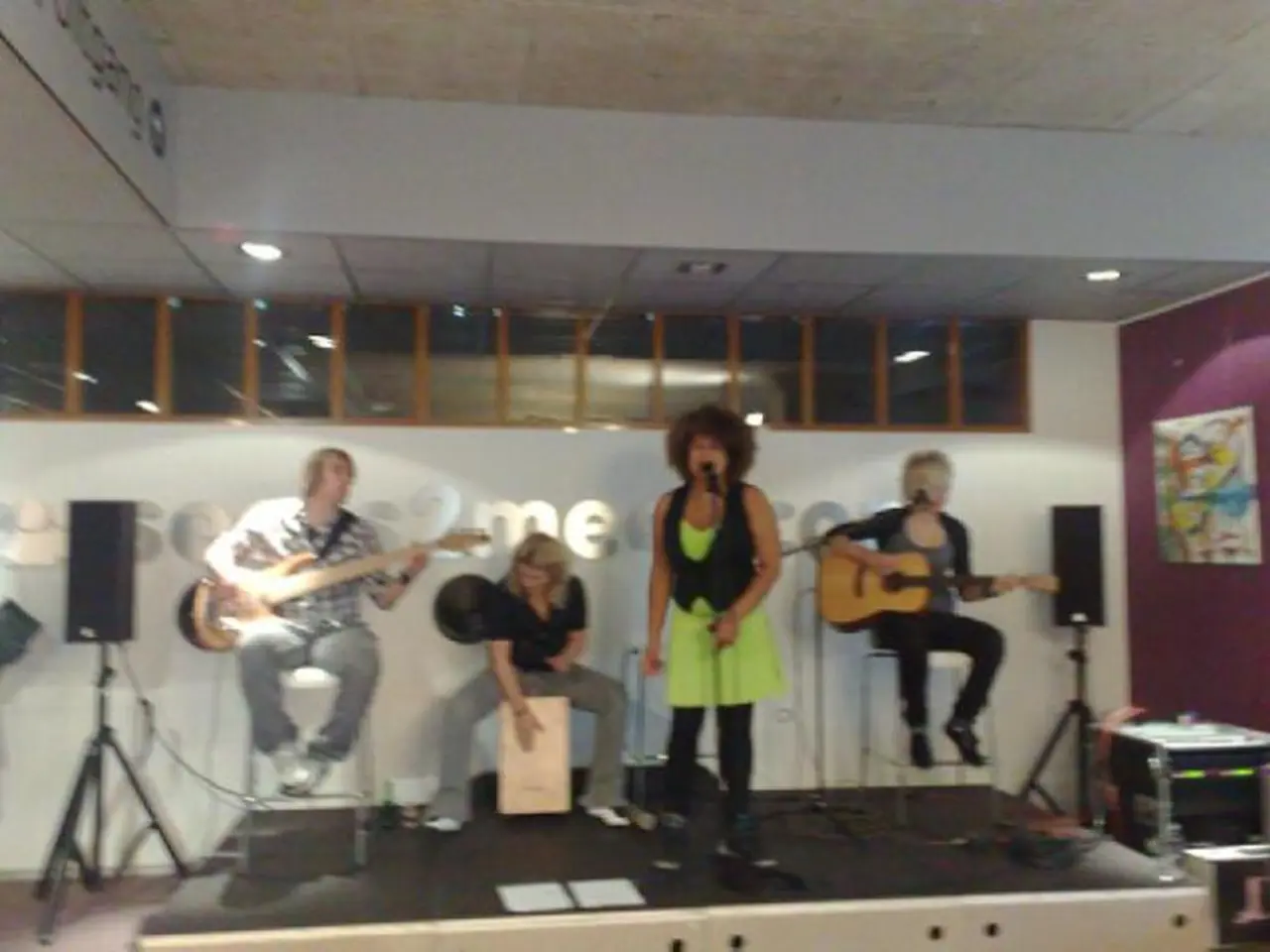The Importance of Grasping Spatial Audio Concepts for Sound Engineers in the Year 2025.
In the ever-evolving world of audio technology, a new frontier is emerging: Spatial Audio, also known as 3D Audio or Virtual Surround Sound. This innovative technology is transforming the way we listen to music, and it's no surprise that industry experts at leading music schools are embracing it.
Traditional stereo recordings, with their channel-based approach, have long provided a linear audio experience, limited to a line between the listener's ears. This setup, while offering width, lacks depth and height, restricting the placement of sounds. In contrast, spatial audio is object-based, allowing each sound to be treated as an individual object with specific coordinates in a virtual space. This enables precise placement and movement of sounds around the listener, creating a 360-degree sonic environment that envelops the listener.
Spatial audio adds height and depth to the audio experience, simulating real-world sound behavior. Techniques like binaural audio, ambisonics, time delay, volume difference, and frequency response are used to create the illusion of sound coming from different directions. The result is an immersive, active listening experience that makes the listener feel as if they are part of the audio environment.
The demand for spatial, top-tier mixes is growing, and aspiring audio engineers who can deliver these mixes are becoming increasingly sought after in the industry. To meet this demand, schools like The Music School are offering unparalleled environments to explore and master spatial audio. With SSL (Solid State Logic) certified training and Dolby-certified studios, students are equipped with the skills and facilities to thrive in the future of sound.
The school's curriculum is industry-focused, preparing students for the growing popularity of spatial audio. With degrees in various fields such as music production, sound engineering, vocal performance, software engineering, radio, and songwriting, students can specialise in the area that best suits their interests and career goals.
The school's commitment to excellence has been recognised, earning it a prestigious Gold rating in the Teaching Excellence Framework (TEF), placing it among the very best institutions. The school offers degrees or short courses in London, LA, Ibiza, and Online, catering to various locations and aspirations.
The technology at the heart of spatial audio is Dolby Atmos, a leading format that enables producers to place instruments and effects above, behind, and beside the listener. Major streaming platforms like Apple Music, Tidal, and Amazon Music have fully embraced spatial audio, and the demand for high-quality Dolby Atmos mixes is skyrocketing, with major labels and producers now expecting spatial versions of tracks as a standard.
Over 90% of Apple users have tried spatial audio, and the catalog of Atmos tracks has grown by 5,000% since 2021. Spatial audio is no longer just for audiophiles; it's going mainstream and appealing to both casual listeners and aspiring audio engineers.
For those interested in exploring spatial audio, The Music School offers free access to a range of free courses, exclusive music-making tools, and tutorials. Whether you're a seasoned professional or a curious beginner, there's never been a better time to dive into the world of spatial audio.
With the surge in demand for spatial audio mixes, aspiring audio engineers can leverage their skills to foster a career in this burgeoning field, particularly as schools like The Music School equip students with cutting-edge technology such as Dolby Atmos to master spatial audio and cater to the growing expectations of major labels and streaming platforms. This trajectory underscores the integration of spatial audio not only in the realm of audio technology but also in the broader education-and-self-development sector, as more individuals seek to engage with and understand this lifestyle-enhancing technology.




